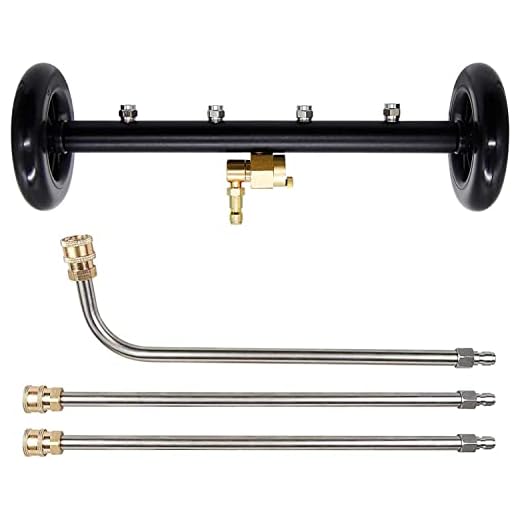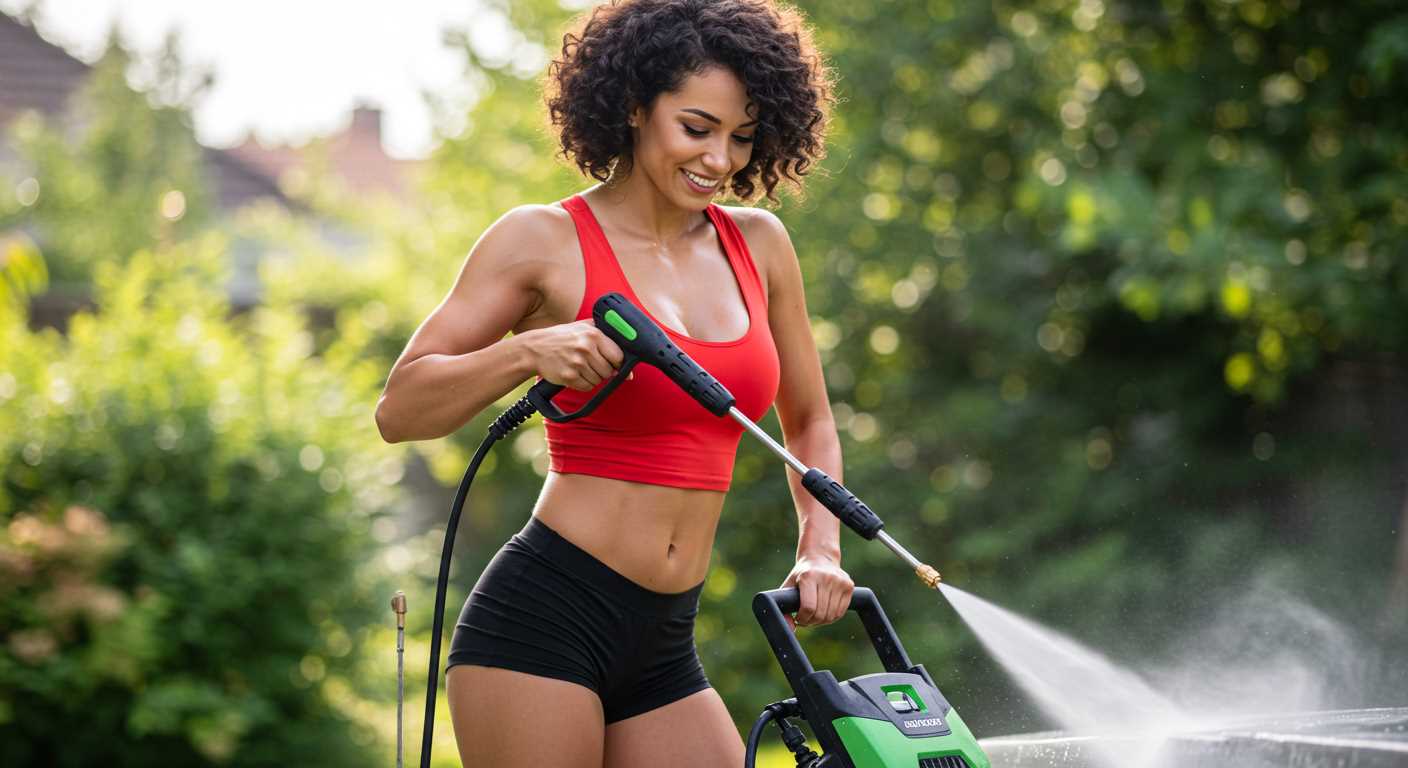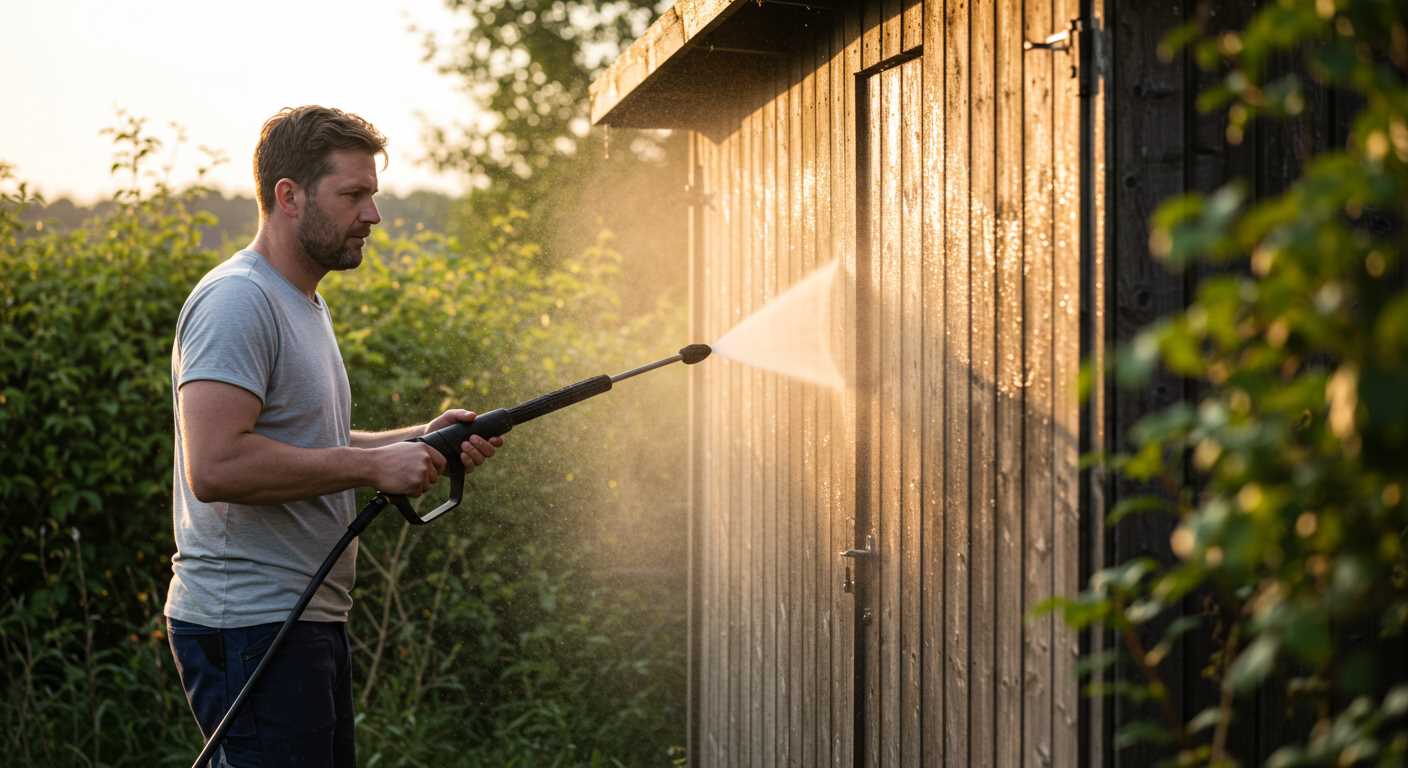



To determine the output you can expect from your cleaning machine, first look for the specification sheet provided by the manufacturer. This document typically includes the litres per minute (L/min) figure. A standard residential unit often delivers between 6 to 12 L/min, ensuring efficient cleaning for basic tasks.
If the details are absent, consider conducting a simple test. Connect your machine to a standard water supply and use a bucket to capture the water for one minute. Measure how much water fills the bucket; this provides a practical indicator of performance. For instance, if your bucket holds 10 litres, your setup operates at 10 L/min.
Another factor influencing this measurement is the nozzle type. A narrow nozzle concentrates pressure, potentially increasing effectiveness at the cost of flow. Conversely, a wider nozzle distributes water more broadly, possibly lowering pressure but enhancing coverage.
Keep your equipment in optimal condition. Regular maintenance, including filter checks and hose inspections, contributes to stable output. Any obstruction can reduce efficiency and hinder performance, leading to unanticipated results. Knowing your machine’s output not only helps with project planning but ensures that you achieve the desired cleaning results.
Understanding Flow Rate and Its Importance
Identifying correct numbers for liquid movement is critical. For effective use, beginners should look for a minimum of 6 litres per minute for lighter tasks, while more intense jobs may require upwards of 10 litres per minute. This ensures sufficient pressure for various cleaning challenges.
Higher output not only improves cleaning efficiency but also enhances rinsing capabilities, reducing the likelihood of residues remaining on surfaces. I’ve seen models that struggle below these benchmarks, leading to unsatisfactory results, and this can be frustrating.
Regularly check your unit’s specifications. Often, manufacturers provide detailed information, including optimal performance metrics. Understanding how these correlate to your cleaning needs is beneficial for selecting the right equipment.
Adequate water supply is vital; without it, even the most powerful models won’t perform well. Connecting to a reliable hose or tap ensures uninterrupted service during cleaning tasks.
Keep in mind: assessments of usability often tie back to output levels. Underwhelming statistics can hinder even seasoned enthusiasts, leading to dissatisfaction with performance. Knowing what to expect empowers users to invest properly in tools that align with their requirements.
In summary, understanding these key metrics enhances the overall experience, ensuring satisfaction with outcomes and potential lifespan of your equipment. Invest time in discovering what suits your specific tasks for optimal performance and results.
How to Measure Your Pressure Cleaner’s Output
.jpg)
To determine your machine’s output, use a bucket and stopwatch. Collect water for exactly one minute to assess how much liquid is dispensed. First, ensure your tool is connected to a water source and powered on.
Place a bucket of known volume under the nozzle. Activate the cleaner and start the timer. Capture every drop for one minute, then stop the timer. Measure the amount collected in litres or gallons.
For instance, if you filled a 10-litre bucket within that time frame, your unit delivers 10 litres per minute. Repeat the measurement a few times to ensure accuracy–variations can occur based on pressure fluctuations or nozzle attachment. Document the results for future reference.
Ultimately, this straightforward technique provides valuable insights into your device’s capabilities, aiding in future cleaning projects. This helps in choosing appropriate attachments or techniques tailored to specific tasks.
Factors Affecting Your Cleaning Equipment’s Performance

Several elements can significantly influence how much water your cleaning device outputs. Understanding these factors can help you optimise your usage and ensure effective cleaning.
Pump Efficiency

The type and quality of the pump used in your device play a critical role. High-efficiency pumps facilitate better water flow. Regular maintenance can enhance performance; checking for clogs or wear can prevent a drop in output.
Hose Diameter and Length
The diameter and length of the hoses can either restrict or enhance water movement. Thicker hoses allow for greater volume, while longer lengths can create resistance. Adjusting your setup can lead to noticeable improvements. Additionally, ensuring all connections are secure helps maintain pressure.
Using clean, high-quality water will also prevent potential blockages in the system, allowing consistent delivery. Monitor water temperature; excessively hot water can affect the sealing elements in some units. Investing in an appropriate filter can guard against impurities.
Matching Flow Rate to Cleaning Tasks
For optimal performance in cleaning, align the specifications of your machine with the task at hand. For light duties like washing cars or bike frames, a device with lower water output, typically around 5-6 litres per minute, suffices. This is adequate for removing dirt without risking damage to delicate surfaces.
Moderate Tasks
When tackling moderate jobs such as cleaning patios or driveways, aim for models that deliver between 7-9 litres per minute. This provides a balance of power without excessive pressure, ensuring effective dirt removal while protecting pavers and other surfaces.
Heavy-Duty Cleaning
For more demanding applications–think of stripping paint or blasting away stubborn grime–opt for units exceeding 10 litres per minute. These machines offer enhanced cleaning capabilities, allowing you to complete jobs swiftly and effectively. However, exercise caution; too much power can damage softer materials.
If unsure about the best fit for your specific cleaning needs, consider the nature of the surface and the type of dirt or stains you are dealing with to make an informed choice.
Common Flow Rate Values for Popular Pressure Washers
When selecting a cleaner, understanding typical values can significantly influence decision-making. Here’s an overview of performance specifications for various models:
Residential Units
- Compact electric models usually operate between 1.3 to 1.6 litres per minute (LPM).
- Mid-range electric options offer about 1.6 to 2.3 LPM, providing a balance of power and efficiency.
- Pump-driven gas units generally range from 2.5 to 3.2 LPM, suitable for tougher cleaning tasks.
Commercial and Heavy-Duty Machines
- Professional electric machines can achieve anywhere from 2.5 to 4.5 LPM, tailored for demanding applications.
- Advanced gas units might reach up to 5.0 LPM, ideal for continuous and heavy cleaning operations.
- Specialised models for industrial use can exceed 6.0 LPM, designed for maximum efficiency in tough environments.
This knowledge helps in assessing which unit meets your cleaning needs effectively. Always consider matching the specification with the tasks ahead for optimal performance.
How to Improve Your Pressure Cleaning Machine’s Flow
Upgrading your hoses and accessories can drastically enhance performance. Use high-quality, high-volume hoses to minimise restriction and maximise water delivery from your source to the unit.
Check the Water Source
Ensure your water supply is sufficient. A steady, high-volume source will support better cleaning action. Verify that your garden tap or other source delivers at least 5 litres per minute.
Regular Maintenance
Service your device regularly. Check for clogged filters, which can impede output dramatically. Clean or replace them as needed to maintain optimal performance.
| Tip | Description |
|---|---|
| Upgrade Hoses | Use larger diameter hoses to reduce pressure loss. |
| Water Supply | Ensure your source delivers over 5 litres as a minimum. |
| Filter Maintenance | Regularly clean or replace clogged filters to avoid restrictions. |
| Check Connections | Inspect all connections for leaks that may hinder output. |
These strategies helped many of my clients experience significant improvements in their equipment’s efficiency while reducing their overall cleaning time.
When to Consider Upgrading Your Cleaning Machine
Assessing the time to enhance your cleaning tool often hinges on several practical factors.
- Increased Frequency of Use: If you find yourself using your current model more often than before, it might indicate a need for a more powerful unit capable of handling regular tasks without strain.
- Inadequate Performance: Are you frequently unhappy with the results after cleaning? If your existing device struggles to remove stubborn stains, upgrading can provide you with added power and efficiency.
- Changing Cleaning Needs: Consider the types of projects you’re tackling. Should your chores expand to include larger surfaces or tougher materials than your existing model can tackle, a new unit may be warranted.
- Technological Advances: Innovations in cleaning technology can offer better performance, less water consumption, and enhanced safety features. Keeping abreast of these developments might prompt an upgrade.
- Maintenance Issues: Increased breakdowns and repairs can become costly over time. If your current machine requires ongoing service, investing in a newer model might be more economical.
- Limited Capability: If your machine falls short on crucial specifications like pressure, GPM, or attachments that could enhance versatility, it’s time to explore alternatives that align better with your needs.
Upgrading isn’t just about having the latest model; it’s about enhancing your overall cleaning experience and achieving satisfactory results efficiently.








